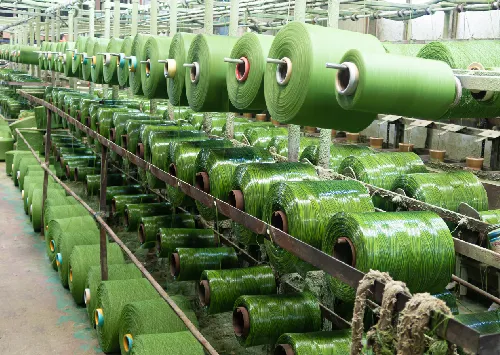
- Afrikaans
- Arabic
- Belarusian
- Bengali
- Czech
- Danish
- Dutch
- English
- Esperanto
- Estonian
- Finnish
- French
- German
- Greek
- Hindi
- Hungarian
- Icelandic
- Indonesian
- irish
- Italian
- Japanese
- kazakh
- Rwandese
- Korean
- Kyrgyz
- Lao
- Latin
- Latvian
- Malay
- Mongolian
- Myanmar
- Norwegian
- Persian
- Polish
- Portuguese
- Romanian
- Russian
- Serbian
- Spanish
- Swedish
- Tagalog
- Tajik
- Thai
- Turkish
- Turkmen
- Ukrainian
- Urdu
- Uighur
- Uzbek
- Vietnamese
artificial turf preparation
Dec . 05, 2024 17:17 Back to list
The Importance of Proper Preparation for Artificial Turf Installation
Artificial turf has become a popular alternative to natural grass for sports fields, playgrounds, and residential lawns. Its durability, low maintenance needs, and year-round greenery make it an appealing choice for many. However, the successful installation of artificial turf heavily relies on thorough preparation. In this article, we will explore the critical steps involved in preparing the ground for artificial turf, ensuring a smooth and long-lasting surface.
Understanding the Site
The first step in the artificial turf preparation process is to thoroughly assess the site. This involves examining the area where the turf will be installed, looking for factors such as drainage, soil composition, and existing vegetation. The ideal location should be flat and well-drained, which minimizes puddling and water accumulation. If the site has poor drainage, it may be necessary to install a drainage system or amend the existing soil to facilitate proper water flow.
Clearing the Area
Once the site assessment is complete, the next step is to clear the area of any debris, grass, weeds, or existing sod. This may involve using a sod cutter or a shovel to remove the old grass. The removal of these layers is crucial for preventing any future growth that could disrupt the artificial turf. After clearing the area, it is essential to rake the ground to create a level surface, removing rocks, roots, and other obstacles that may hinder the installation process.
Grading the Surface
After the area is cleared, grading the surface is the next step. Grading ensures that the turf will have a sloped surface to facilitate proper drainage. A slight slope of about 1-2% away from structures is generally recommended to ensure water runoff. If the ground is uneven, this may involve adding or removing soil to create a smooth, level base. This step is critical, as uneven surfaces can lead to water pooling and uneven wear on the turf over time.
artificial turf preparation

Installing a Base Material
With the surface graded, it is time to lay down a base material. A common practice is to use crushed stone or gravel, which helps create a stable and well-drained foundation for the artificial turf. The base material should be spread evenly across the entire area and compacted to ensure stability. Compaction is essential to prevent settling after the turf is installed. A layer of about 3-4 inches of crushed stone is typical, but the depth may vary depending on local soil conditions and drainage requirements.
Adding a Shock Pad
For sports fields and areas where safety is a concern, adding a shock pad can be beneficial. This cushioned layer absorbs impact and reduces the risk of injury, especially in high-traffic areas or play zones. The shock pad can also help with drainage, ensuring that water flows away from the turf quickly. Once the base and shock pad are in place, a final leveling should be conducted to achieve an even surface.
Laying the Turf
Finally, once the preparation is complete, it is time to lay the artificial turf. The turf rolls should be carefully unrolled and fitted together, ensuring that the seams align correctly. It’s important to work from one end of the area to the other and to pin down the turf as you go, preventing shifting. After securing the turf, infill materials, such as sand or rubber, are spread over the surface to help weigh down the turf fibers and provide cushioning and support.
Conclusion
The preparation of the ground for artificial turf installation is a critical step that directly impacts its performance and longevity. By following these essential steps—assessing the site, clearing the area, grading the surface, installing a base material, adding a shock pad, and carefully laying the turf—you can ensure a successful installation that meets your needs and expectations. Proper preparation leads to a durable, low-maintenance surface that can withstand the test of time, making artificial turf a wise investment for any property owner. Whether for sports, recreation, or landscaping, the journey to a lush, green lawn begins with the right preparation.
-
The Benefits of Artificial Turf for Indoors
NewsJul.15,2025
-
How Artificial Grass Suppliers Ensure Quality Products
NewsJul.15,2025
-
Artificial Grass and Pets: A Space for Relaxation
NewsJul.08,2025
-
Balcony & Outdoor Decoration with Artificial Grass
NewsJul.08,2025
-
Best Indoor Artificial Grass for Home
NewsJul.07,2025
-
Best Pet Turf for Dogs: Safe & Durable Artificial Grass Options
NewsJul.07,2025
Products categories









